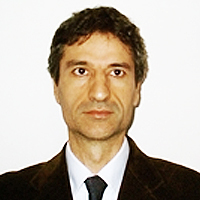Case reports of observed significant improvement in patients with ARDS due to COVID-19 and maximum ventilatory support after inhalation of sodium bicarbonate
Published on: 19th May, 2020
OCLC Number/Unique Identifier: 8599065026
The emergence of COVID-19 worldwide in an unprecedented pandemic. COVID-19 has a significant mortality, mostly from acute lung injury. We reviewed the available literature from China and Europe in regard to the behavior of SARS-Cov2 and ability to adhere to the cell wall [1,2]. The evidence based literature describes three component for the virus to grant entry to the target cells including Cathepsin B/L (the viral cap protein needed for initial connectivity to the cell wall), the angiotensin converting enzyme 2 and a low PH environment to allow the first connectivity of the virus to the cell wall [3]. The goal of our Case study was to prevent SARS- SARS-Cov2 from entering target cells by raising the airways PH using sodium bicarbonate inhalation. The sodium Bicarbonate inhalation (4.2% concentration) has been used safely in Cystic fibrosis (CF) patients with inspissated mucoid impaction [3,4] and in chloride inhalation toxicity by opposing the effect of the low PH induced by the insulting agent [4,5]. It has not been administered for COVID -19 patients particularly prior to this study.
Effective COVID-19 prevention and control in areas of ultra-dense population: Lessons from Macau SAR
Published on: 3rd June, 2020
OCLC Number/Unique Identifier: 8628651927
In this paper we summarise, in chronological order, all COVID-19 preventive measures undertaken by the Macau Special Administrative Region (SAR) government during the first quarter of 2020. The information and narrative contained herein may be of useful to other parts of the world in COVID-19 control and prevention, especially cities with ultra-high population densities. The four main lessons from Macau SAR are: (1) Proactive leadership and early prevention. (2) Strict adherence to community endemic control. (3) Clear prioritising of public health. (4) Planed relief for financial hardships amidst the post-pandemic recession.
Anti COVID-19 immunity developed as assessed in a community-based oncological center
Published on: 7th October, 2020
OCLC Number/Unique Identifier: 8861739910
Introduction: Serology (antibody) tests for the SARS-CoV-2 have been proposed as an instrument to inform health authorities about immunization during the COVID-19 pandemic. As there is a significant part of the population that may have some degree of immunity, it is of great interest to communicate the immunization results obtained in the first 500 healthcare workers (HCW), patients and relatives tested in a community-based Oncological Center.
Materials and methods: Between April 9th, 2020 and May 8th, 2020, a group of healthcare workers (HCW), their families, and general public who had had the COVID-19 or had been in close contact with confirmed cases of COVID-19 were screened for IgG SARS-CoV-2 antibodies. The tests were carried out in a rigorous manner, strictly following the guidelines approved by the Spanish Ministry of Health (Ministerio de Sanidad).
Results: The major objective of this study was to determine the proportion of asymptomatic infected individuals and those who had already secreted IgG against SARS-CoV-2 in our cancer treatment center or in the community of Barcelona. Patients were tested with PCR, Rapid diagnostic test (RDT) or enzyme-linked immunoabsorbent assay (ELISA). A total of 521 participants were tested, 206 with RDT and 315 with ELISA, 59 (11,32%) resulted positive to SARS-CoV-2.
Conclusion: RDT and ELISA proved to be effective and sensible enough to determine the extent of SARS-CoV-2 immunization in a community-based oncological center. The degree of immunization reached is nowadays far away from what can be considered desirable for a herd immunization.
Why are more otorhinolaryngology surgeons dying from Covid-19 than any other surgical specialty?
Published on: 22nd June, 2020
OCLC Number/Unique Identifier: 8627238391
Covid-19 infection is caused by the coronavirus SARS-CoV-2. This has resulted in the present pandemic from which thousands of people have died including many front-line health care workers. Of the surgeons who have died from covid-19 it would appear that otorhinolaryngology surgeons have made the largest sacrifice (Figure 1) [1].
COVID-19 situation in Nepal
Published on: 27th April, 2020
OCLC Number/Unique Identifier: 8582298433
Coronavirus disease 2019 (COVID-19) which first appeared in China spread gradually all over the world within three months [1]. China was the only country mainly affected by Covid-19 until February 2020, but from the beginning of March, the disease started to spread rapidly to South Korea. It reached Italy in the second week of March and the number of cases increased rapidly in Spain and other European countries in the third week of March then the virus crossed the Atlantic and entered into the United States and other countries in the Americas. WHO declared COVID-19 as a pandemic disease on 11th March 2020 [2]. As of 23rd April 2020, there have been 2,645,785 confirmed cases of COVID-19, with 185,121 deaths and 726,827 recoveries [3]. Slowly, Nepal is also into the scene of the COVID-19 affected countries.
Implications on mental health by the coronavirus disease 2019 (COVID-19) pandemic: The role of general practitioner
Published on: 5th May, 2020
OCLC Number/Unique Identifier: 8588739409
Coronavirus disease 2019 (covid-19) pandemic gives rise to a significant number of psychological consequences and health problems. The GP must recognize the feelings generated in their patients and address them. This task includes 4 areas: 1. Knowing and managing the epidemic of anxiety and fear in patients; 2. Assessing possible de-compensation of patients with previous mental problems; 3. Knowing and managing effects of quarantine and social distancing; and 4. Knowing and managing possible truncated mourning. The recommendations for GPs intervention are: 1) In the clinical interview (identify maladaptive thoughts and emotions; comprehensive health); 2) Health information (clear, evidence-based communication); 3) Health education (healthy behaviors); 4) Telecare (support, monitoring and attention over the phone, via WhatsApp or video calls); 5) Crisis interventions (psycho education, cognitive behavioral techniques or referral to specialist); 6) Bibliotherapy (free electronic copies for the public); 7) Special efforts directed at vulnerable populations (infected and sick patients, the elderly, with a compromised immune function and those living or receiving care in congregated settings and people with adverse medical, psychiatric or with substance use problems, their families and caregivers); 8) Psychosocial monitoring (stressors related to COVID-19: exposures to infected sources, infected family members, loss of loved ones and physical distancing, secondary adversities such as economic loss, psychosocial effects such as depression, anxiety, psychosomatic concerns, insomnia, increased use of substances and domestic violence, and vulnerability indicators such as pre-existing physical or psychological conditions); and 9) Follow-up of the “complicated” mourning (“accompaniment” and transmit compassion, love and affection).
Coronaryvirus infection, oxidative stress in ENT
Published on: 17th September, 2020
OCLC Number/Unique Identifier: 8671093042
In COVID-19 pandemic we focused on epidemiology and somewhat we neglect the possibility of biochemical influencing of the infection. Therefore we try to find some properties of the virus, which are impressionable by drugs. Droplet infection transmission is mainly (hypochloric acid) by nose and mouth. Diseases of nose and paranasal sinuses are most often of viral or bacterial origin.
Reactive Oxygen spray as prophylaxis for COVID-19 infection
Published on: 30th October, 2020
OCLC Number/Unique Identifier: 8873218105
Viral transmission of SARS-CoV-2, the virus causing COVID-19 is very high within households despite self isolation [1,2]. Transmission of the virus is thought to be similar to that of influenza. Virus is shed into respiratory secretions which can be transferred through coarse droplets or fine aerosol released when a person coughs, sneezes or talks. These droplets/aerosols may infect another either by direct contact with the mucous membranes or through fomite transmission.
South Asia is more vulnerable to COVID-19 pandemic
Published on: 22nd May, 2020
OCLC Number/Unique Identifier: 8599932087
Coronavirus disease 2019 (COVID-19) which originated in China spread progressively all over the world [1]. On 11th March 2020 WHO declared COVID-19 outbreaks as a pandemic [2]. As of 22nd May 2020, there have been more than 5.3 million confirmed cases of COVID-19, with more than 340 thousand deaths and more than 2.2 million recovered [3]. Slowly, South Asia is also entering the ranks of COVID-19 affected regions. This region comprises more than 21% of the world’s population which remains vulnerable to COVID-19 [4].
Health professional stress during COVID-19 pandemic
Published on: 27th July, 2020
OCLC Number/Unique Identifier: 8683054059
WHO declared the coronavirus disease 2019 (COVID-19) outbreak, caused by SARS-CoV-2, to be a pandemic on March 12, 2020. In Morocco, the first case was reported in March 2nd 2020. The mental health of general population, medical and nursing staff especially has been greatly challenged.
The aim of the present article is to explore the stress status of medical and nursing staff associated with exposure to the COVID-19.
The medical staff was asked to complete a self-reported questionnaire anonymously. In University Hospital Mohamed VI, in Marrakesh, Morocco. During May 2020.
In total, 120 valid questionnaires were collected. Among them, there were 57 residents (47,5%), 30 internes (25%), 22 nurses (19%) and others: medicine students and technical staff. The age was between 23 and 60 years. 15% of professional lived alone, 85% with their family, 74% lived with an old person or with a person having a chronic disease.
In our study: the severity of symptoms in 36% of the asked professional, deaths among health professionals in 15%, death of a family member in 14%, the rapid spread of pandemic in 90%, the lack of knowledge in 83%, and finally contamination risk especially if comorbidity associated in 2%.
Further risk factors: feelings of being inadequately supported by the hospital in 42%, fear of taking home infection to family members or others in 80%, being isolated, feelings of uncertainty and social stigmatization in 43%.
The psychological presentation was the nightmare 19 in %, the insomnia in 48%, the somatization in 18%, the irritability in 22%, the aggressiveness in 14%, the nervousness in 70% and the drowsiness in 5%.
During the vulnerability of the individual’s conditions during and after the COVID-19, psychological intervention should be done and a mental health support for the health professional.




